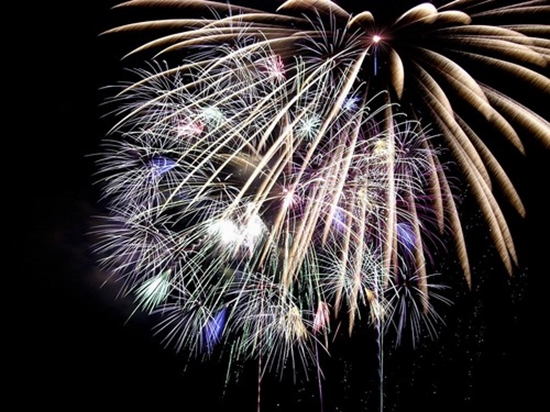Recommendation to Wear Protective Glasses on the Last Wednesday Night of the Year
Eye Injuries Affecting 3,000 People Annually and 15 Eye Removals Among the Injured During Chaharshanbe Suri
According to a report from IRNA, as announced by the Ministry of Health, Treatment, and Medical Education's news and information website (Webda), Dr. Seyed Farzad Mohammadi stated: "Chaharshanbe Suri is a public health crisis, with its impacts primarily focused on certain organs, such as the eyes, skin, and limbs. The Ministry of Health plays a key role in reducing and controlling these injuries." He also emphasized the need for a phenomenological and sociological perspective on the issue of Chaharshanbe Suri and the interventions of relevant institutions in this regard. He added: "If we can attract the attention of sociologists, health specialists, doctors, and other experts to this important phenomenon, we can, through planning over a maximum ten-year period, transform this phenomenon from its current undesirable form into a desirable and normalized event, during which people can celebrate in a healthy way."

*** Fireworks: A Universal Phenomenon ***
The Director of the National Blindness Prevention and Eye Health Program at the Non-Communicable Diseases Center described fireworks and light displays as a universal phenomenon and stated:
Various studies have been conducted regarding fireworks used by people on July 4th, the U.S. Independence Day, in the 1990s. This phenomenon is not unique to Iran; it can be observed in many European countries in different forms.
Dr. Mohammadi added:
These studies present a three-pronged approach to controlling fireworks during celebrations, which includes legislation and enforcement, public education and awareness, and recognizing the proper form of these events—fireworks displays conducted by professionals.
He continued:
It is obvious that utilizing these studies requires comprehensive cooperation between all institutions to reduce the risks of Chaharshanbe Suri, as it is the only public health crisis that has a predictable time, even though its volume and patterns are not entirely predictable.
*** 3,000 Eye Injuries Annually on Chaharshanbe Suri ***
Dr. Mohammadi stated:
Based on studies and estimates from the Farabi Eye Hospital, we see an average of 3,000 people annually suffering from superficial and deep eye injuries due to explosive and fireworks materials during Chaharshanbe Suri celebrations. Around 10% of these individuals require hospitalization, and unfortunately, half to one percent, approximately 15 people, suffer from permanent eye loss.
He further remarked:
Unfortunately, most of these individuals are in the 15 to 20-year-old age group, and as a result of these accidents, the remaining years of their lives are negatively impacted. Some even face social stigma due to eye loss, which has far more damaging consequences than the physical harm itself.
*** Most Eye Injuries Caused by Grenade Explosions ***
The Director of the National Blindness Prevention and Eye Health Program at the Ministry of Health identified grenade explosions as the leading cause of eye injuries during Chaharshanbe Suri. He said:
Fortunately, the use of grenades has decreased in recent years, but fireworks and flares have replaced them, leading to an increase in eye burns.
Dr. Mohammadi emphasized:
Both professional and amateur manufacturers of explosive and fireworks materials should be held accountable for the harm they cause and should face legal consequences according to the law.
He added:
People who engage in fireworks, observers, and pedestrians are all participants in the Chaharshanbe Suri celebrations. The injuries to pedestrians, who often have no role in the fireworks, is a phenomenon unique to our country, where sometimes these injuries are more common than among those actively involved in the celebration.
He also noted the serious safety and health risks posed by the loud explosions heard even 10 days before the event. However, he acknowledged that confronting the Chaharshanbe Suri phenomenon directly is not the best solution. Instead, all institutions should think of alternative methods for safer celebrations.
Dr. Mohammadi suggested:
To control the accidents and injuries of Chaharshanbe Suri, ideas such as virtual firework displays or creating virtual cinemas with smoke and explosion sounds could be considered.
*** Use of Protective Glasses ***
The Director of the National Blindness Prevention and Eye Health Program recommended wearing protective glasses to prevent eye injuries. He stated:
For anyone who wishes to participate in Chaharshanbe Suri, we recommend wearing polycarbonate protective glasses, which are excellent for eye protection. This is particularly important for observers and pedestrians who have no direct role in the fireworks and explosions. These glasses should be obtained from pharmacies, medical supply stores, or sports equipment retailers.
He warned about the dangers of keeping some non-explosive firework materials, like sparklers, at home, explaining:
Keeping these materials at home is like facing an unpredictable explosion because the timing of their detonation is uncertain, increasing the likelihood of accidents.
*** Eye Clinics Busy During Nowruz ***
Dr. Mohammadi mentioned the significant workload of ophthalmologists and the readiness of eye clinics during the Nowruz holiday season. He explained:
During the first week of the year, specialists must perform initial eye surgeries, while the second week is dedicated to final surgeries for eye injury victims. In some cases, they are even engaged in reconstructive eye surgeries throughout the second half of the year.
He highlighted that certain phenomena related to Chaharshanbe Suri, such as pedestrian injuries, are unique to Iran and stated:
The first official report on this issue was published in a scientific article in 2007 by Iranian specialists, which has since been widely referenced.

_1_crop.png)

Leave a comment